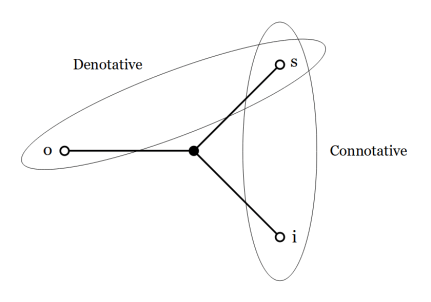Re: Peirce List • Gary Fuhrman
Peirce’s existential graphs are a general calculus for expressing the same subject matter as his logic of relative terms and thus they serve to represent the structures of many‑place relations. Cast at that level of generality, there is nothing to prevent existential graphs from being used to express the special cases of relative terms needed for a theory of triadic sign relations, for example, terms like “s stands to i for o” or “__ stands to __ for __” or any number of other forms, depending on the style one prefers. It may give us pause that we have to use sign relations in order to mention sign relations but the fact is we do that all the time whether we are using Peirce’s semiotics or not. Peirce’s pragmatic analysis of the process simply provides a clearer account than most other approaches do.
References
- Awbrey, S.M., and Awbrey, J.L. (2001), “Conceptual Barriers to Creating Integrative Universities”, Organization : The Interdisciplinary Journal of Organization, Theory, and Society 8(2), Sage Publications, London, UK, 269–284. Abstract. Online.
- Awbrey, S.M., and Awbrey, J.L. (September 1999), “Organizations of Learning or Learning Organizations : The Challenge of Creating Integrative Universities for the Next Century”, Second International Conference of the Journal ‘Organization’, Re‑Organizing Knowledge, Trans‑Forming Institutions : Knowing, Knowledge, and the University in the 21st Century, University of Massachusetts, Amherst, MA. Online.
- Awbrey, J.L., and Awbrey, S.M. (1995), “Interpretation as Action : The Risk of Inquiry”, Inquiry : Critical Thinking Across the Disciplines 15(1), 40–52. Archive. Journal. Online (doc) (pdf).
cc: Conceptual Graphs • Cybernetics • Structural Modeling • Systems Science
cc: FB | Semeiotics • Mathstodon • Laws of Form • Academia.edu


Pingback: Survey of Semiotics, Semiosis, Sign Relations • 4 | Inquiry Into Inquiry
Pingback: Survey of Semiotics, Semiosis, Sign Relations • 5 | Inquiry Into Inquiry